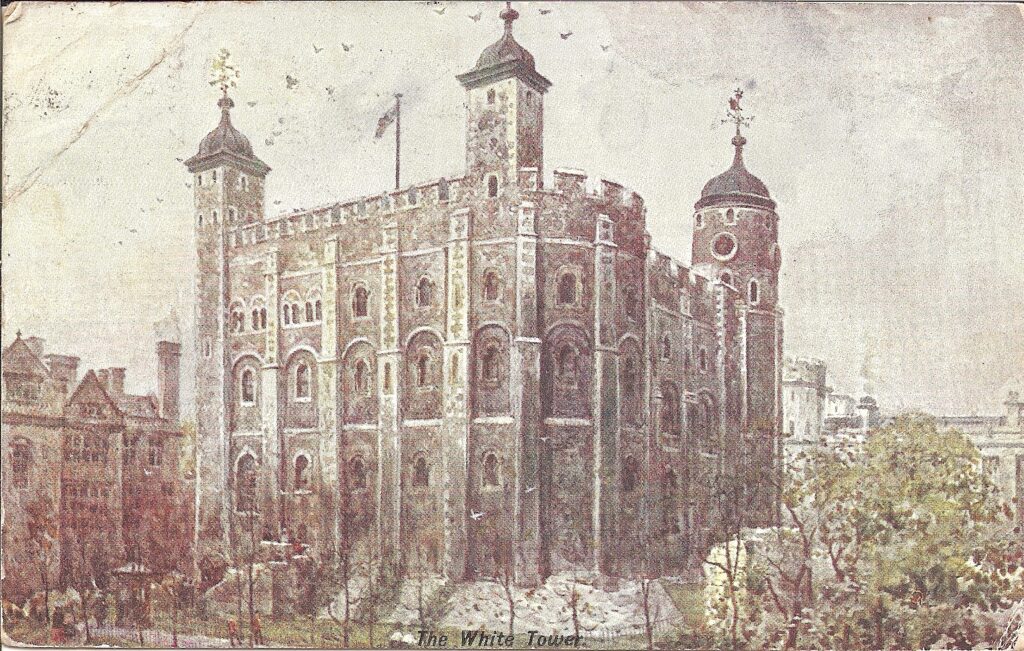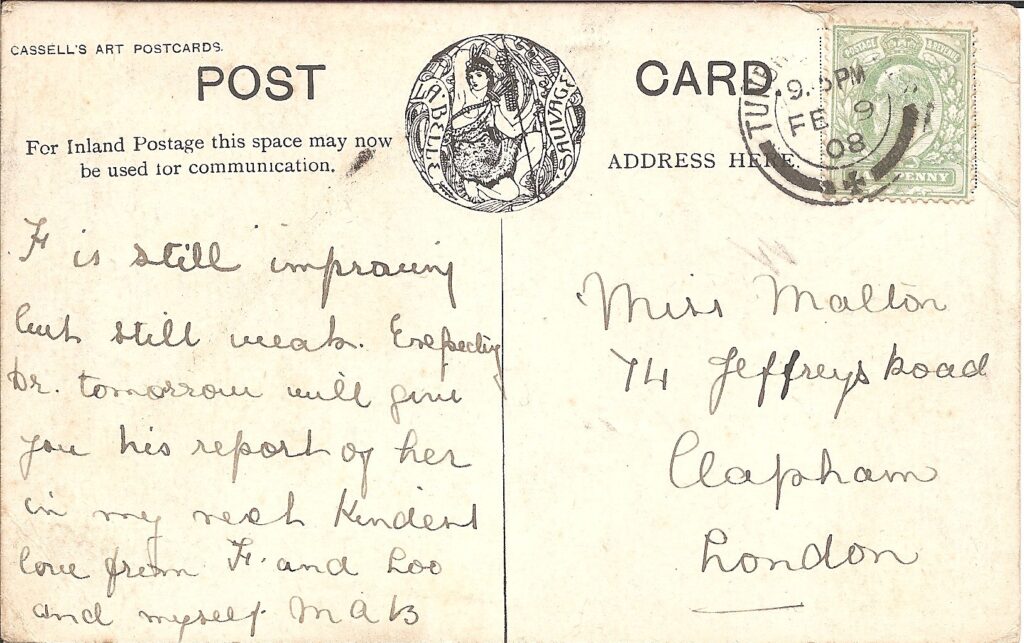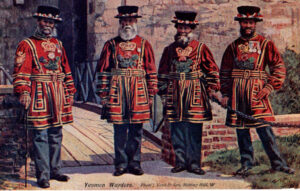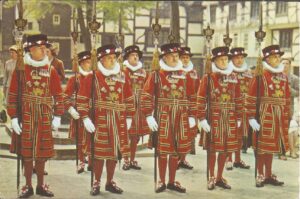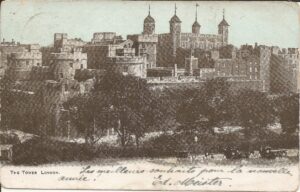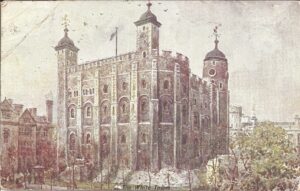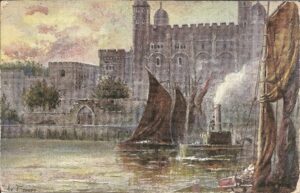In 1908 private telephones were the preserve of the wealthy, so postcards at the halfpenny rate and with multiple deliveries per day were most people’s way to keep in touch. F’s health bulletin posted on Sunday night could be expected to arrive the next day. As is so often the case with postcards, it’s unlikely that we’ll ever know the final outcome and “F” will forever remain convalescent. Meanwhile, was Miss Mallon’s Monday brightened – or is that a light pen stroke above the second ‘l’, and it was good news for Miss Malton?
Cassell’s were a well-established London book publishing firm, and this view of the south front of the White Tower was one of twelve commissioned from H E Tidmarsh to accompany D H Parry’s article “The Tower and its Traditions” in Cassell’s Magazine June 1904. The illustrations were subsequently issued as two sets of six postcards. The post card image is cropped at the cost of several figurers, a weathervane and Mr Tidmarsh’s signature. This article also contains two of the earliest published images of Tower Ravens along with many pigeons – here seen rising above the White Tower itself.
Unfortunately, the reproduction of the postcard is paler than magazine original, and the grubby White Tower and newly planted trees bordering the southern walkway appear rather washed out. The stump of the Wardrobe Tower can clearly be seen to the East of the building, and the stone stairs that formerly led to the New Horse Armoury waiting room remain, but the armoury building itself has been demolished. Another eight years would pass before the whole of the White Tower interior was given over to museum displays. Visitors accessed the upper floors via the back door in the north face of the building, skirting the active gun store on the entrance floor which remained barred to the public.
Developed from a post originally created for the Royal Armouries’ website in 2021.

